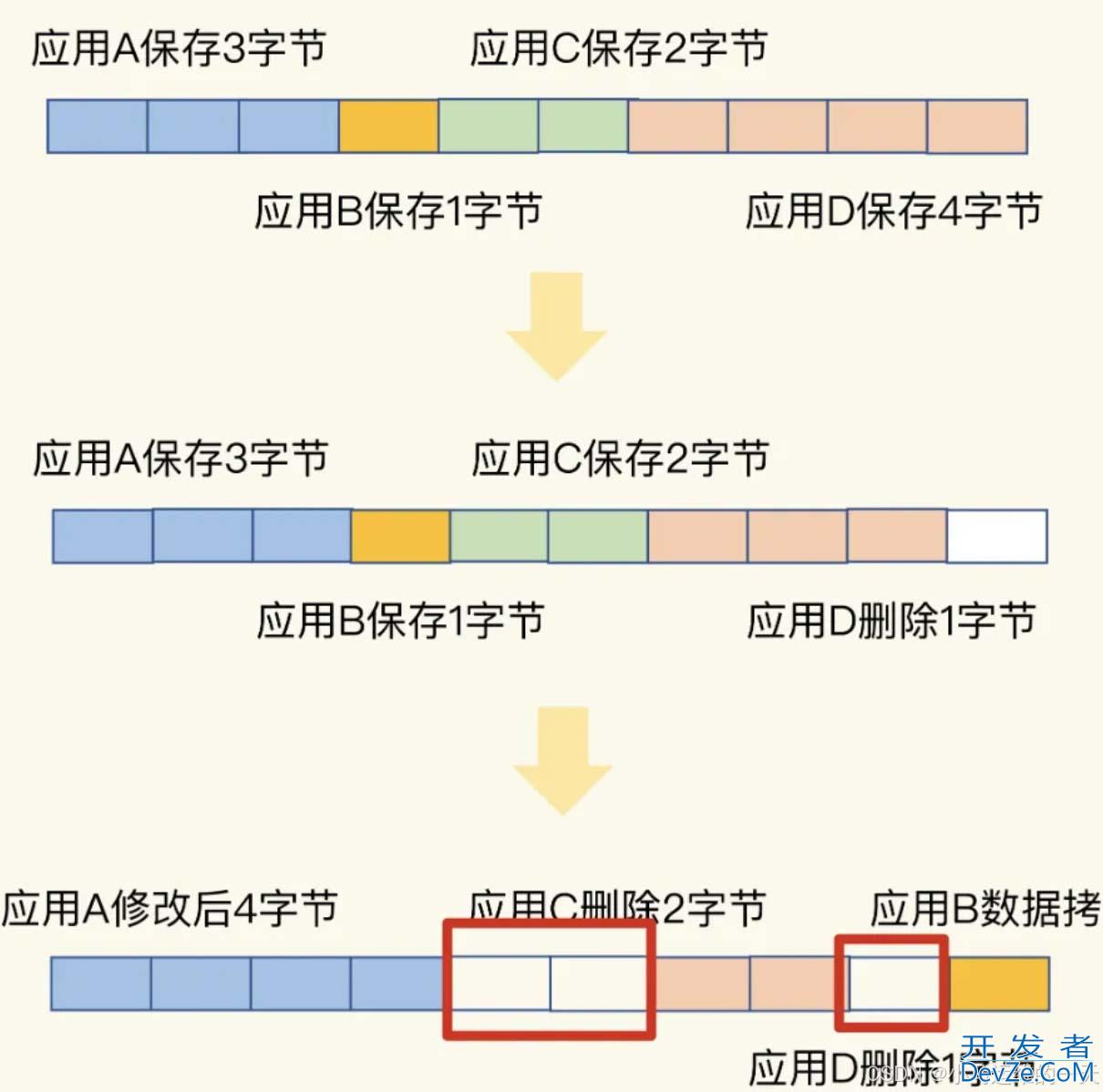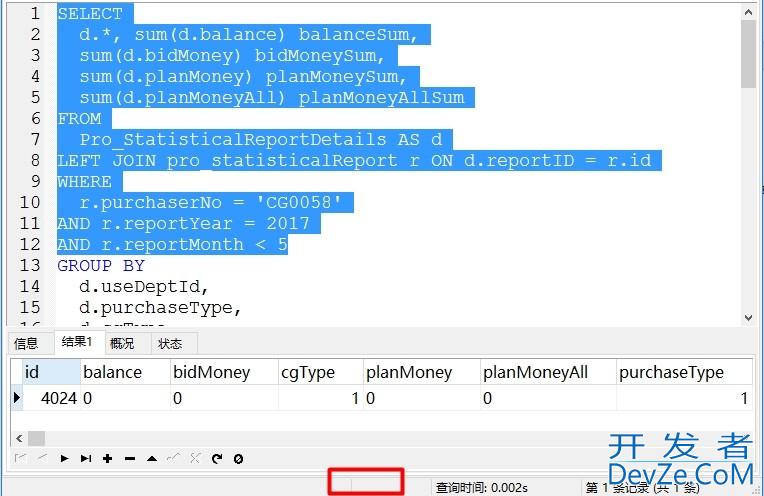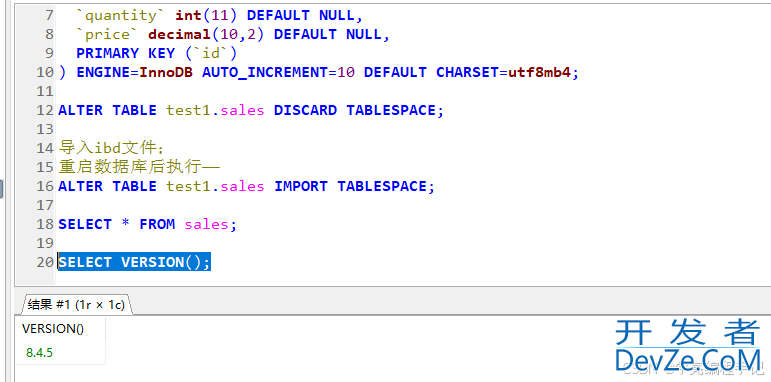Redis内存碎片率调优处理方式
目录
- 1.背景概述
- 2.Redis内存碎片的形成
- 3.清理内存碎片
- 4.扩展
- MEMORY STATS
- MEMORY USAGE
- MEMORY DOCTOR
- MEMORY MALLOC-STATS
- MEMORY PURGE
- 总结
1.背景概述
在生产环境中Redis Cluster集群触发了内存碎片化的告警(碎片率>1http://www.devze.com.5),集群节点分布三台宿主机六个节点三主三从架构,Redis版本是6.2.X。
2.redis内存碎片的形成
内存碎片形成的原因主要有2点:
- 内因:操作系统的内存分配机制。
- 外因:Redis的负载特征造成。
内因:
内存分配器会按照固定大小来分配内存,而不是按需分配。例如linux下默认是4KB,开启内存大页机制后就变成2MB。
Redis中使用jemalloc分配器来分配内存。它会按照一系列固定大小的内存来进行分配。例如当Redis中需要申请一个20B大小的空间来保存数据,那么jemalloc分配器就会分配32B:
倘若此时应用还要写入5B大小的数据,那么无需申请额外的空间。
倘若此时应用还要写入20B大小的数据,那么必须在申请额外的空间了,此时就会有产生内存碎片的风险(之前分配的32B中,10B就是内存碎片了)
外因:
我们有一个Redis实例,里面有着不同大小的键值对,那么根据内存分配器的分配机制来看。就有可能分配着不同大小的连续内存空间。
另一方面,我们对键值对也有可能有着不同的操作,增删改查。
如图所示

上图中,白色部分的就是内存碎片,可以看出大小不一的键值对以及修改删除操作导致产生了内存碎片。
3.清理内存碎片
清理内存碎片之前,首先应该做的就是判断是否有内存碎片:
我们可以登录Redis后使用INFO MEMORY命令查看。mem_fragmentation_ratio参数的值就是内存碎片化的值。
mem_fragmentation_ratio代表Redis实例当前的内存碎片率。其计算公式为:
mem_fragmentation_ratio = used_memory_RSS / used_memory
- used_memory_rss:操作系统实际分配Redis的物理内存空间。
- used_memory:Redis为了保存数据而实际申请的空间。
针对mem_fragmentation_ratio,有两个参考:
- mem_fragmentation_ratio ∈ (1, 1.5]:属于合理范围内,暂时可以放放。
- mem_fragmentation_ratio ∈ (1.5, +∞):表明内存碎片率超过了50%,需要采取措施降低内存碎片率。
那么如何清理内存碎片呢(一般不会重启实例,因为生产上往往不允许这种神操作出现),在Redis4.0版本以后,Redis提供了内置的内存碎片清理机制。
#内存碎片回收机制使用 activedefrag yes # active-defrag-ignore-bytes与active-defrag-threshold-lower两个条件同时满足会触发内存碎片清理,当有一个不满足则停止清理 # 启动活动碎片整理的最小碎片浪费量,内存碎片的字节数达到100M时开始清理 active-defrag-ignore-bytes 100mb # 启动活动碎片整理的最小碎片百分比,内存碎片空间占操作系统分配给redis的总空间比例达到 10% 时开始清理 active-defrag-threshold-lower 10 # 内存碎片超过 100%,则尽最大努力整理 active-defrag-threshold-upper 100 # 以CPU百分比表示的碎片整理的最小工作量,自动清理过程所用CPU时间的比例不低于5%,保证能正常清理 active-defrag-cycle-min 5 # 自动清理过程所用CPU时间的比例不高于75%,超过75%停止清理,避免redis主线程阻塞 active-defrag-cycle-max 75
以上参数可根据主机资源配置及应用场景自行调整。
除此之外,值得注意的是,虽然Redis提供了这样的自动内存清理机制,能够带来清理内存碎片的好处,但是与此同时的必定有着其对应的牺牲,也就是性能影响问题。
Redis提供了内置的内存碎片清理机制的使用前提是在编译的过程中添加了内存分配器参数MALLOC=jemalloc
make MALLOC=jemalloc
4.扩展
当然我们在生产环境使用Redis过程中也可以使用自带的命令进行内存使用情况的诊断,便于我们及时对问题进行优化处理。
我们可以使用MEMORY help查看:
127.0.0.1:6379> MEMORY help 1) MEMORY <subcommand> arg arg ... arg. Subcommands are: 2) DOCTOR - Return memory problems reports. 3) MALLOC-STATS -- Return internal statistics report from the memory allocator. 4) PURGE -- Attempt to purge dirty pages for reclamation by the allocator. 5) STATS -- Return information about the memory usage of the server. 6) USAGE <key> [SAMPLES <count>] -- Return memory in bytes used by <key> and its value. Nested values are sampled up to <count> times (default: 5).
MEMORY STATS
redis的内js存使用不只包含全部的key-value数据,还有描述这些key-value的元信息,以及许多管理功能的消耗,好比持久化、主从复制,经过MEMORY STATS能够更好的了解到redis的内存使用情况
127.0.0.1:6379> MEMORY STATS
1) "peak.allocated"
2) (integer) 13749176
3) "total.allocated"
4) (integer) 7308872
5) "startup.allocated"
6) (integer) 791424
7) "replication.backlog"
8) (integer) 0
9) "clients.slaves"
10) (integer) 0
11) "clients.normal"
12) (integer) 2587994
13) "aof.buffer"
14) (integer) 0
15) "Lua.caches"
16) (integer) 1912
17) "db.0"
18) 1) "overhead.hashtable.main"
2) (integer) 285216
3) "overhead.hashtable.expires"
4) (integer) 1568
19) "overhead.total"
20) (integer) 3668114
21) "keys.count"
22) (integer) 5492
23) "keys.bytes-per-key"
24) (integer) 1186
25) "dataset.bytes"
26) (integer) 3640758
27) "dataset.percentage"
28) "55.861713409423828"
29) "peak.percentage"
30) "53.158615112304688"
31) "allocator.allocated"
32) (integer) 7323560
33) "allocator.active"
34) (integer) 8429568
35) "allocator.resident"
36) (integer) 12427264
37) "allocator-fragmentation.ratio"
38) "1.1510205268859863"
39) "allocator-fragmentation.bytes"
40) (integer) 1106008
41) "allocator-rss.ratio"
42) "1.4742468595504761"
43) "allohttp://www.devze.comcator-rss.bytes"
44) (integer) 3997696
45) "rss-overhead.ratio"
46) "0.65557020902633667"
47) "rss-overhead.bytes"
48) (integer) -4280320
49) "fragmentation"
50) "1.1209555864334106"
51) "fragmentation.bytes"
52) (integer) 879088
一共有15项内容,内存使用量均以字节为单位
1. peak.allocated
redis启动到如今,最多使用过多少内存。
2. total.allocated
当前使用的内存总量。
3. startup.allocated
redis启动初始化时使用的内存,有不少读者会比较奇怪,为何个人redis启动之后什么都没作就已经占用了几十MB的内存?
这是由于redis自己不只存储key-value,还有其余的内存消耗,好比共享变量、主从复制、持久化和db元信息,下面各项会有详细介绍。
4. replication.backlog
主从复制backlog使用的内存,默认10MB,backlog只在主从断线重连时发挥做用,主从复制自己并不依赖此项。
5. clients.slaves
主从复制中全部slave的读写缓冲区,包括output-buffer(也即输出缓冲区)使用的内存和querybuf(也即输入缓冲区),这里简单介绍一下主从复制:app
redis把一次事件循环中,全部对数据库发生更改的内容先追加到slave的output-buffer中,在事件循环结束后统一发送给slave。
那么主从之间就不免会有数据的延迟,若是主从之间链接断开,重连时为了保证数据的一致性就要作一次全量同步,这显然是不够高效的。
backlog就是为此而设计,master在backlog中缓存一部分主从复制的增量数据,断线重连时若是slave的偏移量在backlog中,那就能够只把偏移量以后的增量数据同步给slave便可,避免了全量同步的开销。
6. clients.normal
除slave外全部其余客户端的读写缓冲区。
有时候一些客户端读取不及时,就会形成output-buffer积压占用内存过多的状况,能够经过配置项client-output-buffer-limit来限制,当超过阈值以后redis就会主动断开链接以释放内存,slave亦是如此。
7. aof.buffer
此项为aof持久化使用的缓存和aofrewrite时产生的缓存之和,固然若是关闭了appendonly那这项就一直为0:less
redis并非在有写入时就当即作持久化的,而是在一次事件循环内把全部的写入数据缓存起来,待到事件循环结束后再持久化到磁盘。
aofrewrite时缓存增量数据使用的内存,只在aofrewrite时才会使用。
能够看出这一项的大小与写入流量成正比。ide
8. db.0
redis每一个db的元信息使用的内存,这里只使用了db0,因此只打印了db0的内存使用状态,当使用其余db时也会有相应的信息。优化
db的元信息有如下三项:
- a) redis的db就是一张hash表,首先就是这张hash表使用的内存(redis使用链式hash,hash表中存放全部链表的头指针);
- b) 每个key-value对都有一个dictEntry来记录他们的关系,元信息便包含该db中全部dictEntry使用的内存;
- c) redis使用redisObject来描述value所对应的不一样数据类型(string、list、hash、set、zset),那么redisObject占用的空间也计算在元信息中。
overhead.hashtable.main:
db的元信息也便是以上三项之和,计算公式为:
hashtable + dictEntry + redisObject
overhead.hashtable.expires:
对于key的过时时间,redis并无把它和value放在一块儿,而是单独用一个hashtable来存储,可是expires这张hash表记录的是key-expire信息,因此不须要`redisObject`来描述value,其元信息也就少了一项,计算公式为:
hashtable + dictEntry
9. overhead.total
3-8项之和:startup.allocated+replication.backlog+clients.slaves+clients.normal+aof.buffer+dbx
10. dataset.bytes
全部数据所使用的内存——也即total.allocated - overhead.total——当前内存使用量减去管理类内存使用量。
11. dataset.percentage
全部数据占比,这里并无直接使用total.allocated作分母,而是除去了redis启动初始化的内存,计算公式为:
100 * dataset.bytes / (total.allocated - startup.allocated)
12. keys.count
redis当前存储的key总量
13. keys.bytes-per-key
平均每一个key的内存大小,直觉上应该是用dataset.bytes除以keys.count便可,可是redis并无这么作,而是把管理类内存也平摊到了每一个key的内存使用中,计算公式为:
(total.allocated - startup.allocated) / keys.count
14. peak.percentage
当前使用内存与历史最高值比例
15. fragmentation
内存碎片率
MEMORY USAGE
使用方法:MEMORY USAGE <key> [SAMPLES <count>]
命令参数很少,经过字面意思也能够看出来是评估指定key的内存使用状况。samples是可选参数默认为5,以hash为例看下:
127.0.0.1:6379> HGETALL 9527 1) "name" 2) "zhouxingxing" 3) "age" 4) "50" 5) "city" 6) "hongkong" 127.0.0.1:6379> MEMORY USAGE 9527 (integer) 101
首先相似于上一节中的overhead.hashtable.main,要计算hash的元信息内存,包括hash表的大小以及全部dictEntry的内存占用信息。
与overhead.hashtable.main不一样的是,每一个dictEntry中key-value都是字符串,因此没redisObject的额外消耗。
在评估真正的数据内存大小时redis并无去遍历全部key,而是采用的抽样估算:随机抽取samples个key-value对计算其平均内存占用,再乘以key-value对的个数即获得结果。
试想一下若是要精确计算内存占用,那么就须要遍历全部的元素,当元素不少时就是使redis阻塞,因此请合理设置samples的大小。
其余数据结构的计算方式相似于hash,此处就再也不赘述。
MEMORY DOCTOR
此项子命令是做者给出的关于redis内存使用方面的建议,在不一样的容许状态下会有不一样的分析结果。
首先是没问题的状况
运行状态良好
Hi Sam, I can't find any memory issue in your instance. I can only account for what occurs on this base.
redis的数据量很小,暂无建议:Hi Sam, this instance is empty or is using very little memory, my issues detector can't be used in these conditions. Please, leave for your mission on Earth and fill it with some data. The new Sam and I will be back to our programming as soandroidon as I finished rebooting.
内存使用峰值1.5倍于目前内存使用量,此时内存碎片率可能会比较高,须要注意:
Sam, I detected a few issues in this Redis instance memory implants:
* Peak memory: In the past this instance used more than 150% the memory that is currently using. The allocator is normally not able to release memory after a peak, so you can expect to see a big fragmentation ratio, however this is actually harmless and is only due to the memory peak, and if the Redis instance Resident Set Size (RSS) is currently bigger than expected, the memory will be used as soon as you fill the Redis instance with more data. If the memory peak was only occasional and you want to try to reclaim memory, please try the MEMORY PURGE command, otherwise the only other option is to shutdown and restart the instance.
I'm here to keep you safe, Sam. I want to help you.
内存碎片率太高超过1.4,须要注意:
High fragmentation: This instance has a memory fragmentation greater than 1.4 (this means that the Resident Set Size of the Redis process is much larger than the sum of the logical allocations Redis performed). This problem is usually due either http://www.devze.comto a large peak memory (check if there is a peak memory entry above in the report) or may result from a workload that causes the allocator to fragment memory a lot. If the problem is a large peak memory, then there is no issue. Otherwise, make sure you are using the Jemalloc allocator and not the default libc malloc.
每一个slave缓冲区的平均内存超过10MB,缘由多是master写入流量太高,也有多是主从同步的网络带宽不足或者slave处理较慢:Big slave buffers: The slave output buffers in this instance are greater than 10MB for each slave (on average). This likely means that there is some slave instance that is struggling receiving data, either because it is too slow or because of networking issues. As a result, data piles on the master output buffers. Please try to identify what slave is not receiving data correctly and why. You can use the INFO output in order to check the slaves delays and the CLIENT LIST command to check the output buffers of each slave.
普通客户端缓冲区的平均内存超过200KB,缘由多是pipeline使用不当或者Pub/Sub客户端处理消息不及时致使:Big client buffers: The clients output buffers in this instance are greater than 200K per client (on average). This may result from different causes, like Pub/Sub clients subscribed to channels bot not receiving data fast enough, so that data piles on the Redis instance output buffer, or clients sending commands with large replies or very large sequences of commands in the same pipeline. Please use the CLIENT LIST command in order to investigate the issue if it causes problems in your instance, or to understand better why certain clients are using a big amount of memory.
MEMORY MALLOC-STATS
打印内存分配器状态,只在使用jemalloc时有用。
MEMORY PURGE
请求分配器释放内存,只对jemalloc生效。
总结
以上为个人经验,希望能给大家一个参考,也希望大家多多支持编程客栈(www.devze.com)。








 加载中,请稍侯......
加载中,请稍侯......
精彩评论